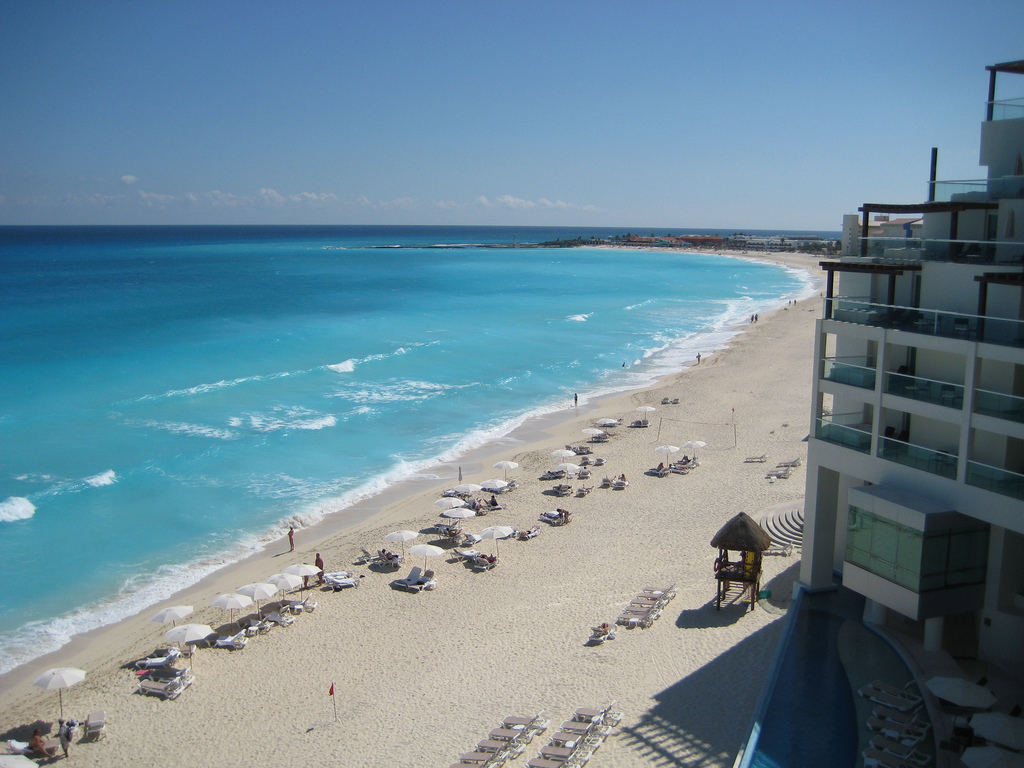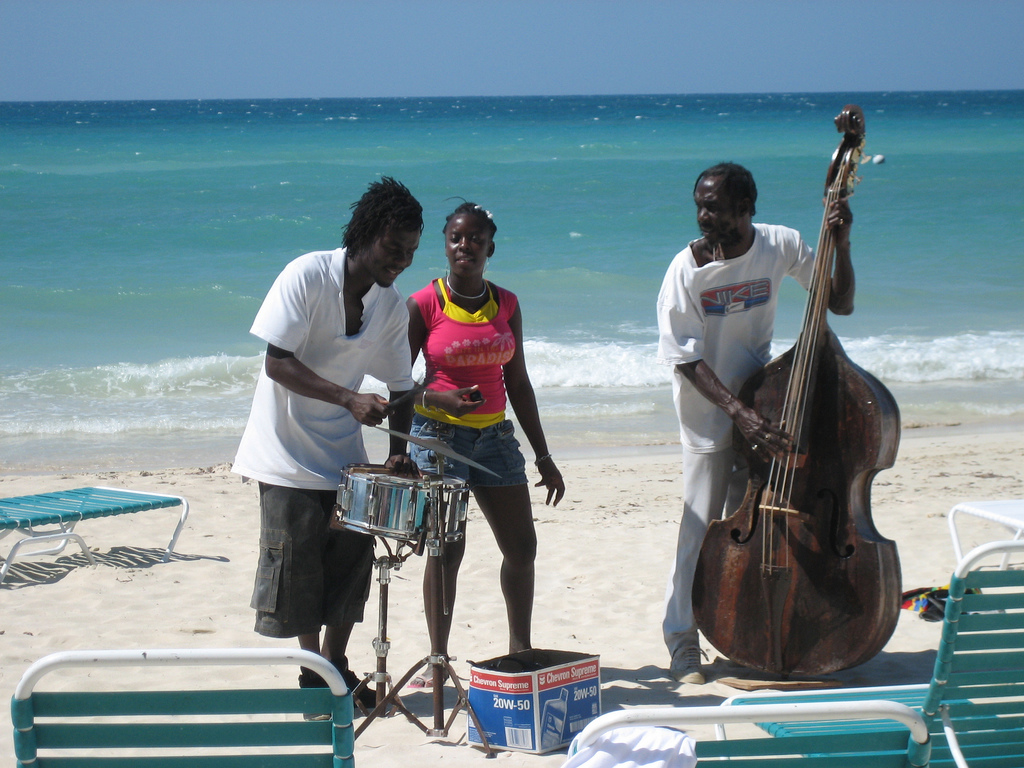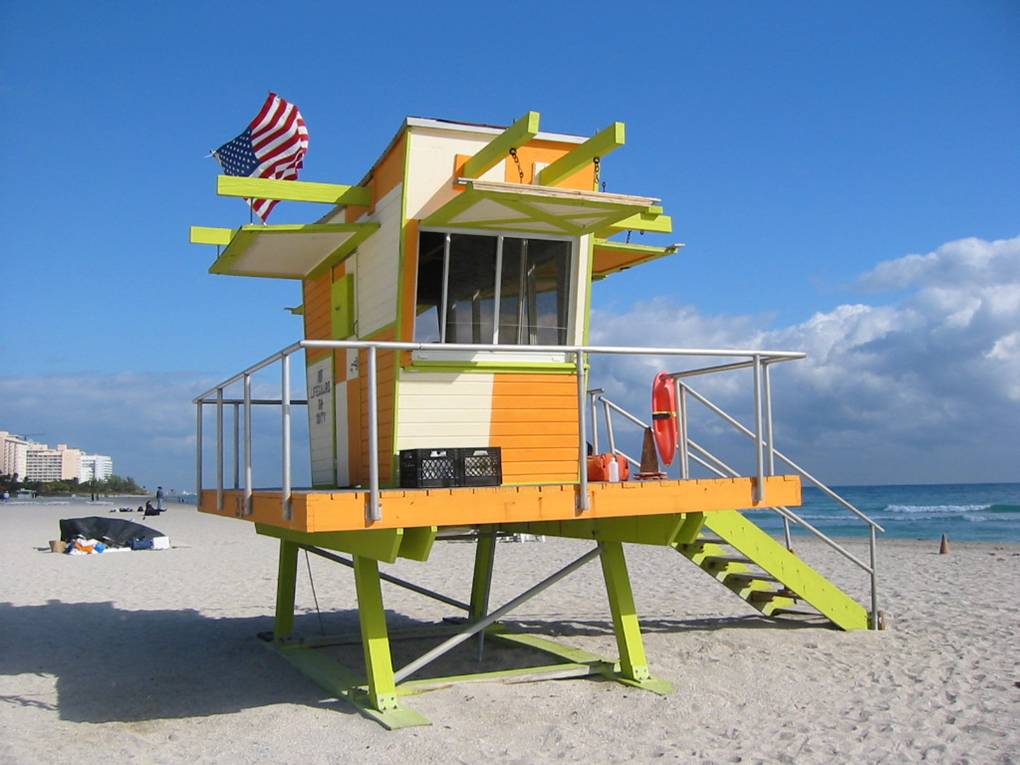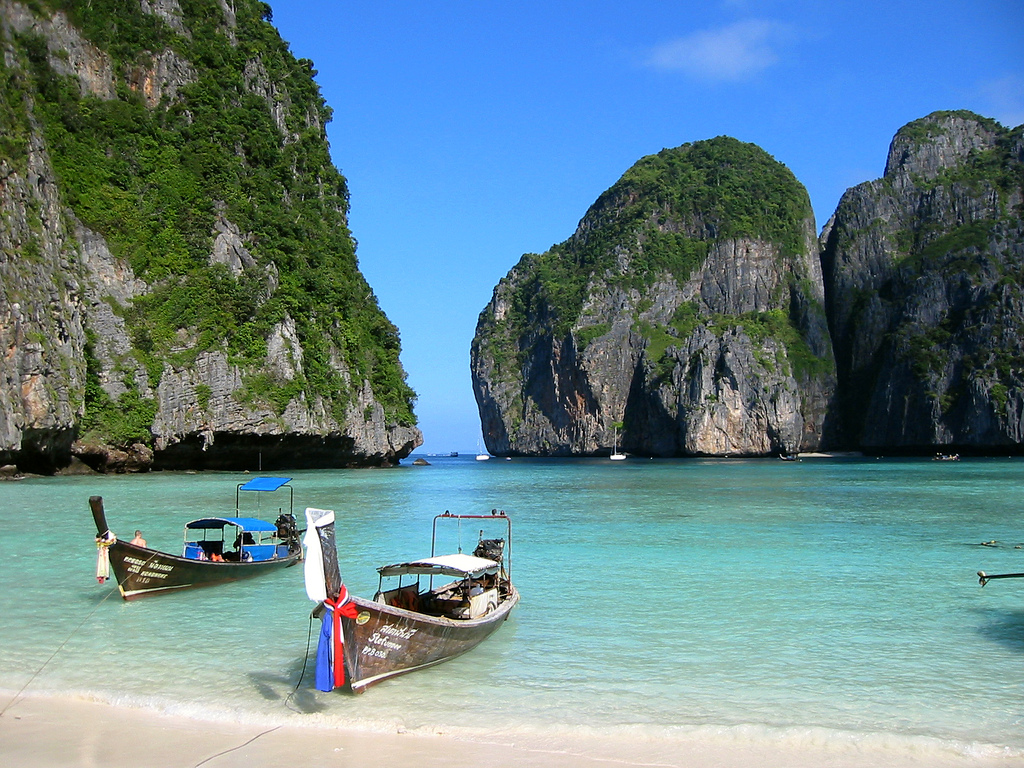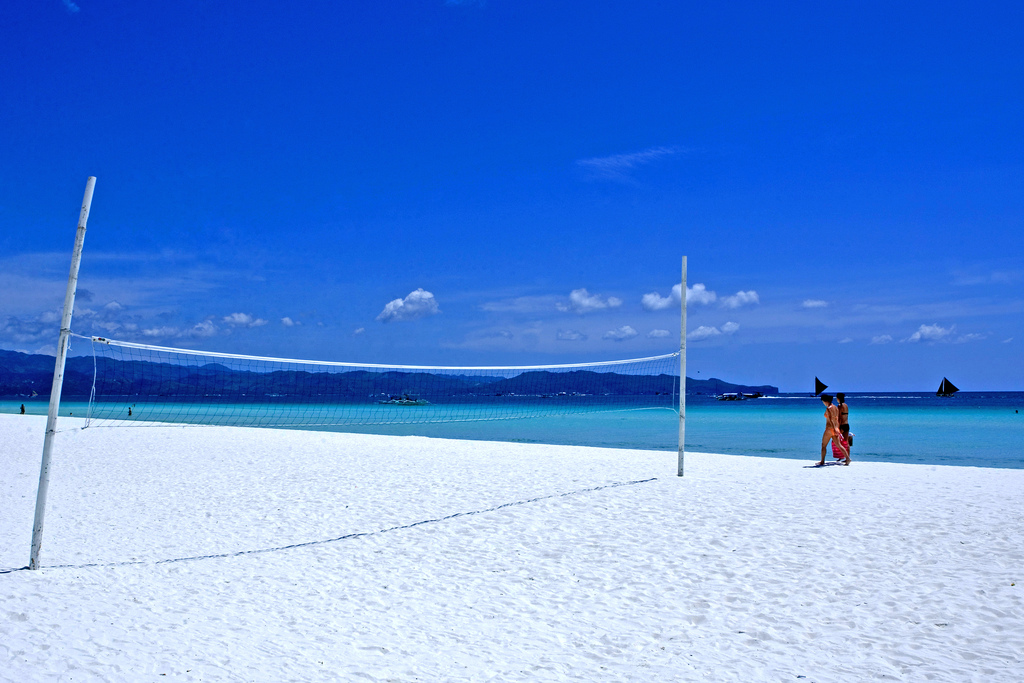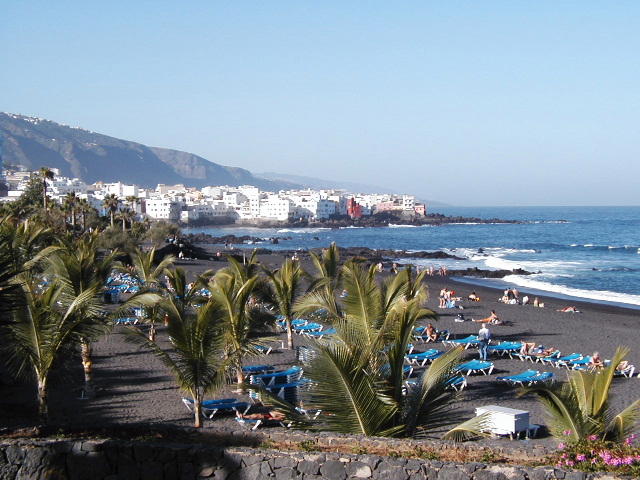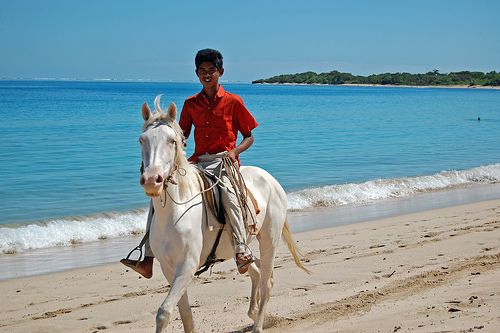Top 10 Most Famous Beaches in the World | that are based on warm weather, sand quality, beautiful waters, facilities and environment etc..
1. Copacabana Beach, Rio De Janeiro, Brazil.
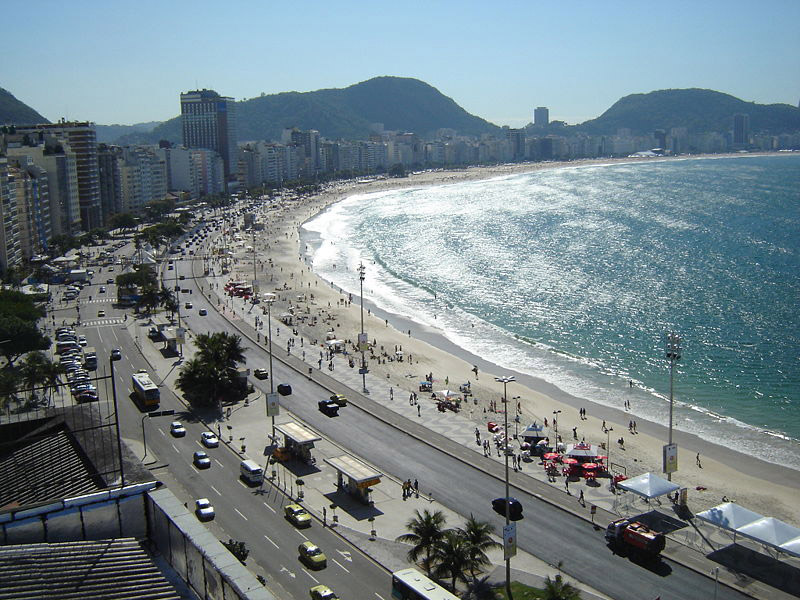
Copacabana Beach, Rio De Janeiro, Brazil
Copacabana is a borough located in the southern zone of the city Rio de Janeiro, famous for its 4 km beach.
The district was originally called Sacopenapã until the mid-18th century. It was renamed after the construction of a chapel holding a replica of the Virgin of Copacabana, the patron saint of Bolivia. It was incorporated into the city on July 6, 1892.
Copacabana begins at Princesa Isabel Avenue and ends at Posto Seis (lifeguard watchtower Six) near the Forte de Copacabana (Fort Copacabana). Beyond Copacabana, there is the small Arpoador beach, followed by the famous borough of Ipanema.
According to Riotur, the Tourism Secretariat of Rio de Janeiro, there are 63 hotels and 10 hostels in Copacabana.
Text Source: http://en.wikipedia.org/wiki/Copacabana_(Rio_de_Janeiro)
2. Waikiki, Hawaii.
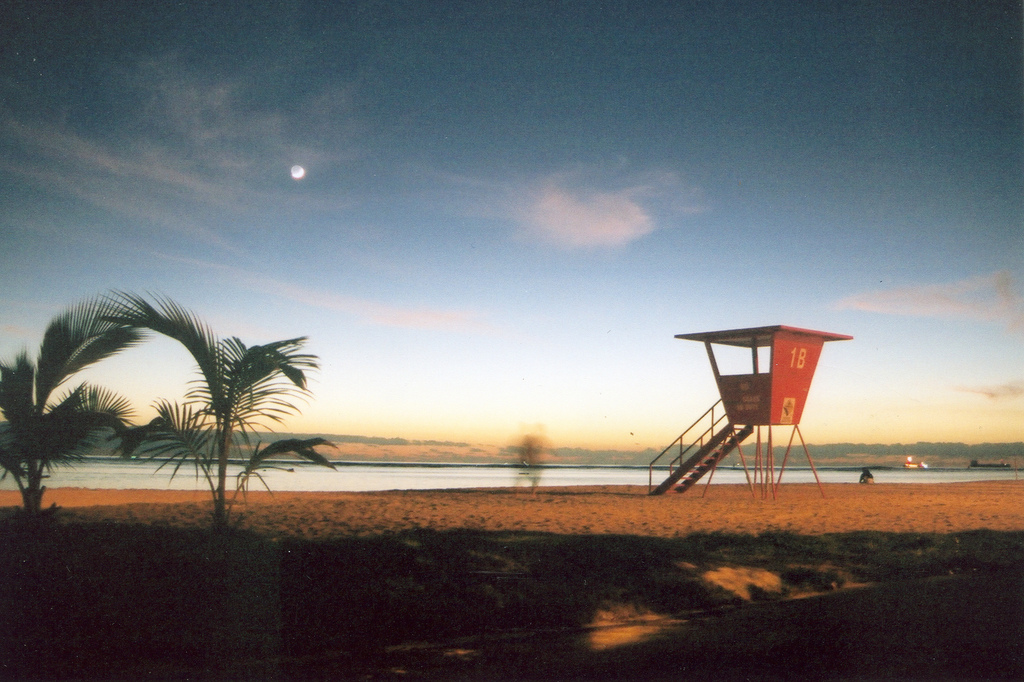
Waikiki, Hawaii
Waikiki is a neighborhood of Honolulu, in the City & County of Honolulu, on the south shore of the island of Oahu, Hawaii. Waikiki Beach is the shoreline fronting Waikiki and one of the best known beaches in the world.
The neighborhood extends from the Ala Wai Canal (a channel dug to drain former wetlands) on the west and north, to Diamond Head on the east. The name means spouting fresh water in Hawaiian for springs and streams that fed wetlands that once separated Waikiki from the interior. Waikiki has long been a place of relaxation. In particular, the area was a retreat for Hawaiian royalty in the 1800s.
Today the neighborhood and beach are considered the center of the tourist industry in Hawaii, with an abundance of both high-rise resort hotels (including the Hilton Hawaiian Village, the Halekulani hotel, the Hyatt Regency Waikiki, and the Sheraton Waikiki) and historic hotels dating back to the early 20th century (such as the Moana Surfrider Hotel and the Royal Hawaiian Hotel).
As seen in the picture, Waikiki Beach is noted for its magnificent view of Diamond Head. The frequently visited tourist beach, easily accessible by an alley next to the Royal Hawaiian Hotel, is actually fairly short, with half of it marked off for surfers. For some distance into the ocean the water is quite shallow, although there are numerous rocks on the bottom, so waders should watch where they put their feet. As with most ocean beaches the waves can have some force, particularly on windy days.
The beach has had its problems with erosion, leading to the construction of groins and beach replenishment projects. For example, in the 1920s and 1930s sand was obtained from Manhattan Beach, California, and transported via ship and barges to Waikiki.
Since 2001, there have been free movies on the beach. Many tourists from around the world can view a movie on an outdoor 30 foot screen. This particular free movie event in Waikiki is called "Sunset on the Beach". Sunset on the Beach typically shows movies of no higher than a PG rating. Recently, they showed Enchanted.
Text Source: http://en.wikipedia.org/wiki/Waikiki
3. Cancun, Mexico.
Cancún is a coastal city in Mexico's easternmost state, Quintana Roo, on the Yucatán Peninsula best known as the Mexican Caribbean or at the northern section of the Mayan Riviera; however Cancun does not share a similar climate or topography to the Mediterranean.
It is the municipal seat of Benito Juárez municipality and a world-renowned tourist resort. The city center is located on the mainland which connects over the Nichupté and Bojórquez lagoons to a narrow "7" shaped island where the modern beachfront hotels are located. The island of Isla Mujeres is a nearby island located off the coast and is accessible by boat from Puerto Juarez or Punta Sam.
The older section of the city, known as "El Centro" follows the original master plan, consists of neighborhoods called "supermanzanas" (superblocks) that are formed by the intersections of the boulevards and traffic circles (roundabouts). This area is characterized by winding streets with cul-de-sacs that tend to keep out the main flow of traffic, including market places such Xel Ha. They usually have one or more parks, green spaces, paseos (pedestrian walkways) and various national historical monuments. Ave. Tulum is the main north-south artery (connecting downtown to the airport some 30km to south). Tulum is bisected by Ave. Coba (pronounced Koh bah). East of Ave. Tulum, Coba becomes Ave. Kukulcan which serves as the primary road that runs through the long "7" shaped hotel zone. Ave. Tulum is terminated on the north side by Ave. Paseo José López Portillo which connects to the main highway to Chichen Itza and Merida. Another major north-south road is Ave. Bonampak which runs roughly parallel to Ave. Tulum. The main ferry to Isla Mujeres is located off Bonampak.
The original master plan was repeatedly modified and, on the mainland, often ignored. To save on the cost of installing sewage systems and other public services, the design of much of the rest of the city reverted to the grid plan after Hurricane Gilbert (1988). The newest upper-middle-class residential areas reflect the original plan, but are much less intimate. Less expensive developments are comprised almost entirely of identical one- or two-story small row houses, sometimes built around interior plazas. Almost all buildings on the mainland are under four stories high.
Text Source: http://en.wikipedia.org/wiki/Cancun
4. Surfer's Paradise, Australia.
Surfers Paradise is a suburb on Australia's Gold Coast in Queensland. Colloquially known as 'Surfers', the suburb is famous for its many high-rise apartment buildings and wide surf beach. The central feature of the Surfers Paradise central business district is Cavill Mall, which runs through the centre of the main shopping precinct. Cavill Avenue, named after Jim Cavill, an early hotel owner, is one of the busiest shopping strips in Queensland, and is the centre of activity for night life and 'schoolies' trips.
Text Source: http://en.wikipedia.org/wiki/Surfers_Paradise
5. Negril, Jamaica.
Negril is a large beach resort located across parts of two Jamaican parishes, Westmoreland and Hanover. Westmoreland is the westernmost parish in Jamaica, located on the south side of the island. Downtown Negril, the West End cliff resorts to the south of downtown, and the southern portion of the seven mile beach are in Westmoreland. The northernmost resorts on the beach are actually located in Hanover. Both parishes are part of the county of Cornwall. The nearest large town and capital of Westmoreland is Savanna-la-Mar.
Text Source: http://en.wikipedia.org/wiki/Negril
6. South Beach, Florida.
South Beach is the section of Miami Beach, Florida that encompasses the southernmost 23 blocks of an island separating the Atlantic Ocean and Biscayne Bay. This area was the first section of Miami Beach to be developed, starting in the 1910s, thanks to the development efforts of Carl G. Fisher, the Lummus Brothers, John S. Collins, and others. The area has gone through numerous man-made and natural changes over the years, including a booming regional economy, increased tourism, and the 1926 hurricane that destroyed much of the area.
Text Source: http://en.wikipedia.org/wiki/South_Beach
7. Phi Phi, Thailand.
The Phi Phi Islands are located in Thailand, between the large island of Phuket and the western Andaman Sea coast of the mainland. Phi Phi Don, the larger and principal of the two Phi Phi islands, is located at [show location on an interactive map] 7°44′00″N, 98°46′00″E. Both Phi Phi Don, and Phi Phi Leh, the smaller, are administratively part of Krabi province, most of which is on the mainland, and is located at 8°02′30″N, 98°48′39″E.
Ko Phi Phi Don (meaning "island" in the Thai language) is the largest island of the group, and is the only island with permanent inhabitants, although the beaches of the second largest island, Ko Phi Phi Lee (or "Ko Phi Phi Leh"), are visited by many people as well. There are no accommodation facilities on this island, but it is just a short boat ride from Ko Phi Phi Don. The rest of the islands in the group, including Bida Nok, Bida Noi, and Bamboo Island, are not much more than large limestone rocks jutting out of the sea.
Phi Phi Don was initially populated by Muslim fishermen during the late 1940s, and later became a coconut plantation. The Thai population of Phi Phi Don remains more than 80% Muslim.
Ko Phi Phi Leh was the backdrop for the 2000 movie The Beach. Phi Phi Leh also houses the 'Viking Cave', from which there is a thriving bird's nest soup industry. There was criticism during filming of 'The Beach' that the permission granted to the film company to physically alter the environment inside Phi Phi Islands National Park was illegal.
Following the release of The Beach, tourism on Phi Phi Don increased dramatically, and with it the population of the island. Many buildings were constructed without planning permission.
Text Source: http://en.wikipedia.org/wiki/Phi_Phi_Islands
8. Boracay, Philippines.
Boracay is a tropical island located approximately 315km (200 miles) south of Manila and 2km off the northwest tip of the island of Panay in the Western Visayas region of the Philippines. It is one of the country's most popular tourist destinations. The island comprises the barangays of Manoc-Manoc, Balabag, and Yapak (3 of the 17 barangays which make up the municipality of Malay), and is under the administrative control of the Philippine Tourism Authority in coordination with the Provincial Government of Aklan.
Text Source: http://en.wikipedia.org/wiki/Boracay
9. Tenerife, Canary Islands.
The Canary Islands are a Spanish archipelago. The archipelago consists of seven major islands, one minor island, and several small islets. They are of volcanic origin and can be found in the North Atlantic Ocean. These islands are located just off the coast of the north-western portion of the African continent/mainland, nearest the political divide of Morocco and Western Sahara. They form the autonomous community of the Canary Islands. The Canary Islands were formed by the Canary hotspot. The status of capital city is shared by the two cities of Las Palmas de Gran Canaria and Santa Cruz de Tenerife.
Text Source: http://en.wikipedia.org/wiki/Canary_Islands
10. Natadola Beach, Fiji.

